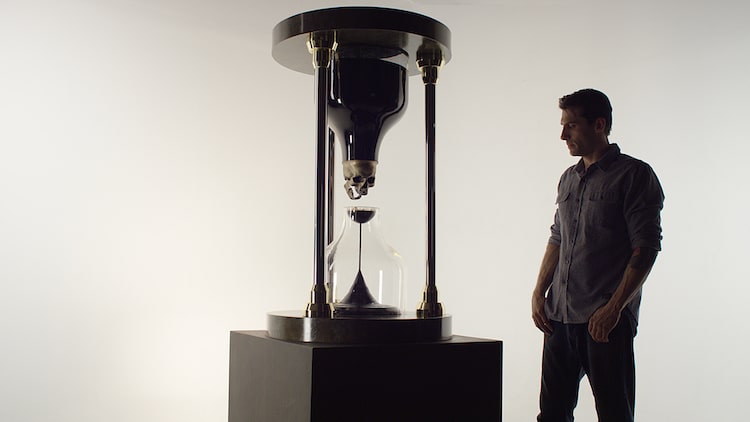
‘Killing Time’
The artist known simply as Mesplé creates compelling moving sculptures that combine elements of art, science, technology, and human interactivity. Employing time-honored foundry construction techniques like welding and blacksmithing, he elevates these everyday approaches by using them to produce objects and experiences that we’ve never seen nor had before.
One of Mesplé’s latest pieces, titled Killing Time, features sleek, masterfully crafted metalwork integrated with sensors that react to human presence. As the viewer approaches, their attendance sets in motion an eerie series of events. A deep black ferrofluid—a liquid that’s strongly magnetized when around a magnetic field—produces breath-like motions into the mouth of a polished skull. The surreal kinetic sculpture is mesmerizing in how it both consumes the special liquid and the geometric design that’s created as the ferrofluid travels from the glass vessel to the head.
We had the opportunity to talk to Mesplé about Killing Time and how he comes up with these other types of alluring experiences. Scroll down to read our exclusive interview, below.
Artist Mesplé creates compelling kinetic sculptures that fuse foundry techniques with science and technology that’s aided by human interactivity.
Your work has so many aspects to it, from art to technology. How do you decide how to integrate the two? Have you always been interested in combining these two fields, and why?
I have been making art and sculptures since I was a little kid and was very fortunate to have the guidance to explore other realms of creativity outside of just traditional forms of artistic expression. My father is an artist, he also holds degrees in physics and architecture, not to mention his mastery of regular tools. As a child, I remembering making a Jacob’s ladder in third grade from an old induction coil. Once I built it, I thought it was amazing, but wanted to show off the jumping of electricity between the copper rods. I thought, what other shapes could I make this work with? And how do I show this off in a way no one has seen before?
From around that age, I realized I could show off physics using technology and fabrication in ways a typical scientist wouldn’t worry about, and an artist typically wouldn’t take the time to look into the science and technology sides. To this day I still love doing it.
My latest work [Killing Time] has had a very positive response and has helped to establish that I am ultimately doing something different than kinetic sculpture. In my process I overlap and make connections with scientists, industry experts or professors that work outside the realm of fine art. I share in their joy of the unexpected outcome that I work towards.
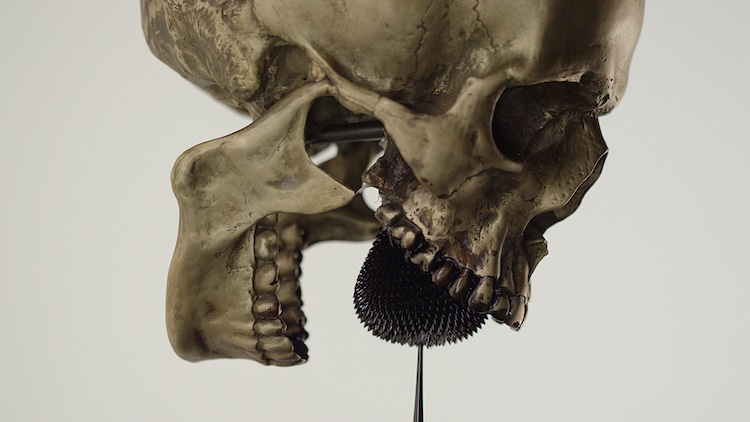
‘Killing Time’ (detail)
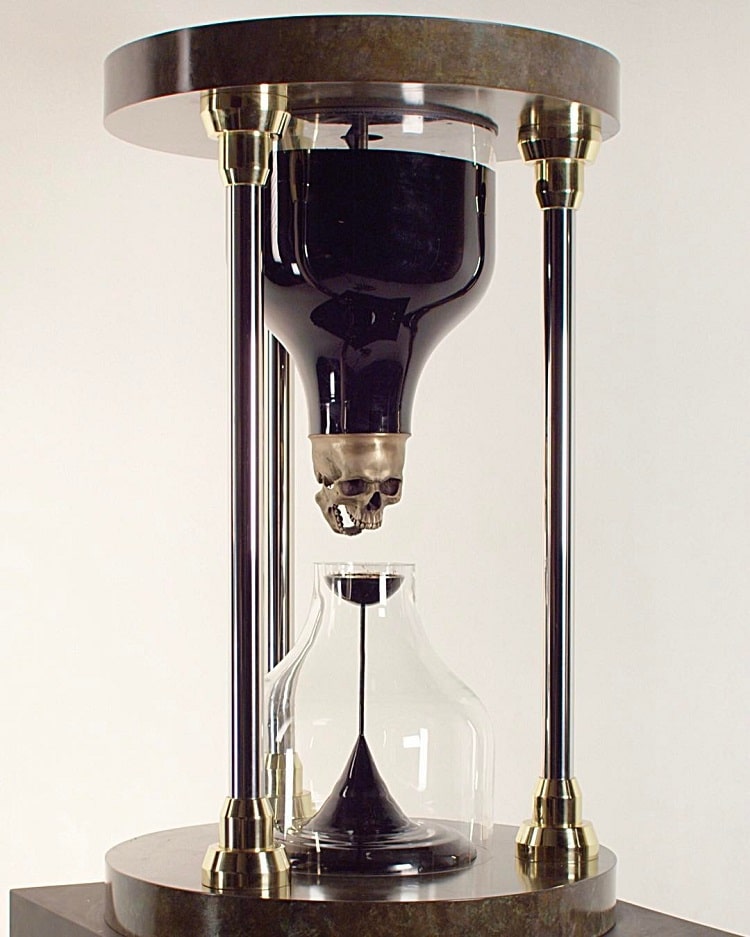
‘Killing Time’ (detail)
Many of your pieces incorporate human-like elements to them, such as making breath-like motions. What inspires this, and how do you think it aids in viewers connecting with your work?
My fascination with dinosaurs and evolution followed me in books throughout the house growing up and into college where I first thought to study anthropology. As with the rise of life, I found an interest in the rise of the machine. Being human, I feel we all have a connection to that feeling when a machine first strikes us as intelligent, especially when one becomes aware of you as a being. Pulse or temperature readings, automated switches and remote accessibility are all actions dependent on your own body or movement to execute a response or level of control and we are each familiar with. We all have a connection to our actions changing something else in the physical world. I like showing these things because I think we as beings have a natural pull toward anything we feel connected to, and what more in this world globally do all humans recognize and can associate with then our bodies and our senses.
In my work, I hope to leave something beautiful that anyone and everyone can enjoy because of our innate connection as humans—not because of our level of education or technical understanding. I like to leave enough behind that people can get lost in the complexity or the simplicity of what I have made.
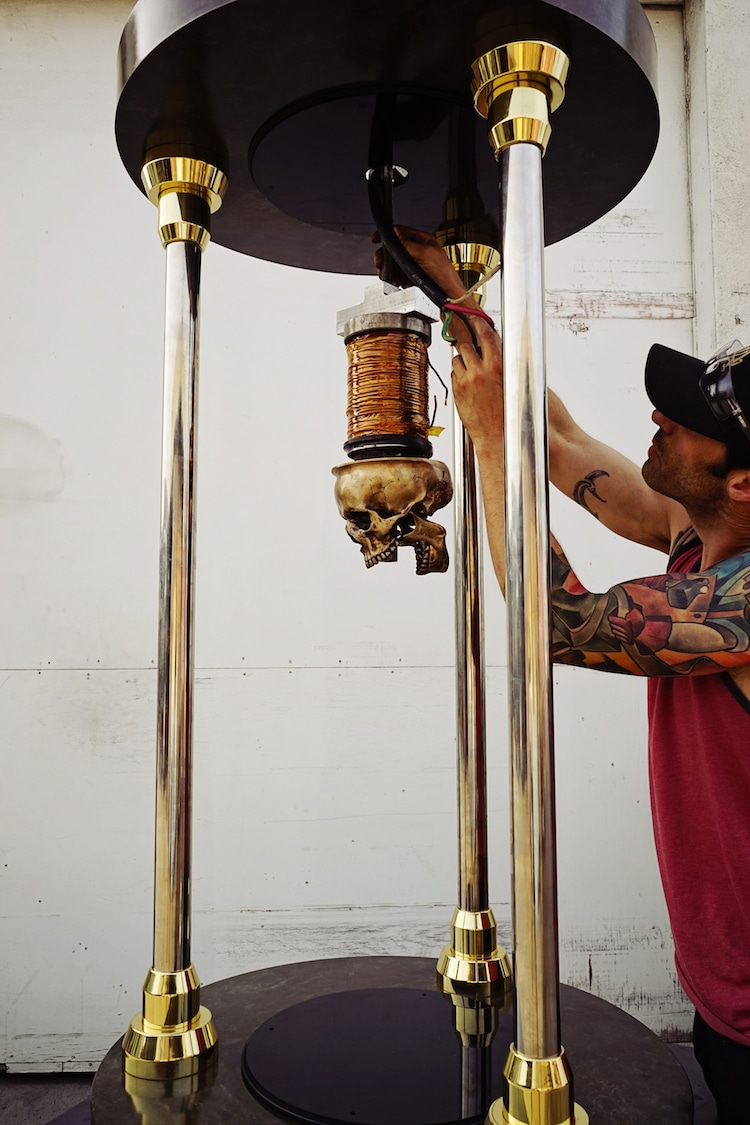
‘Killing Time’ in progress
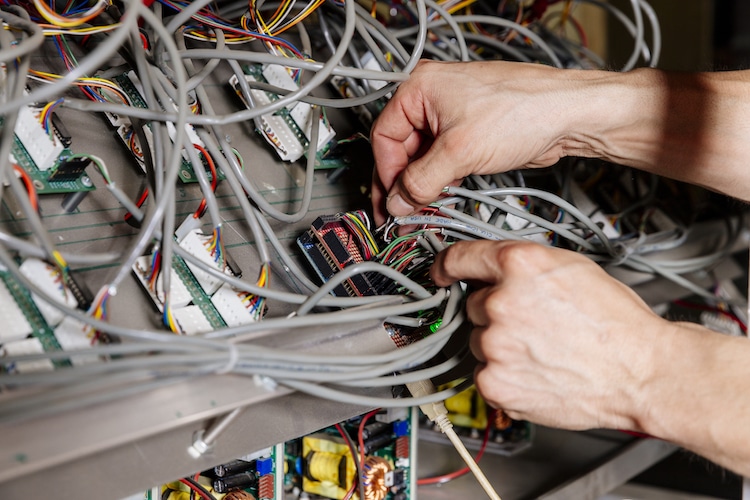
‘Killing Time’ in progress
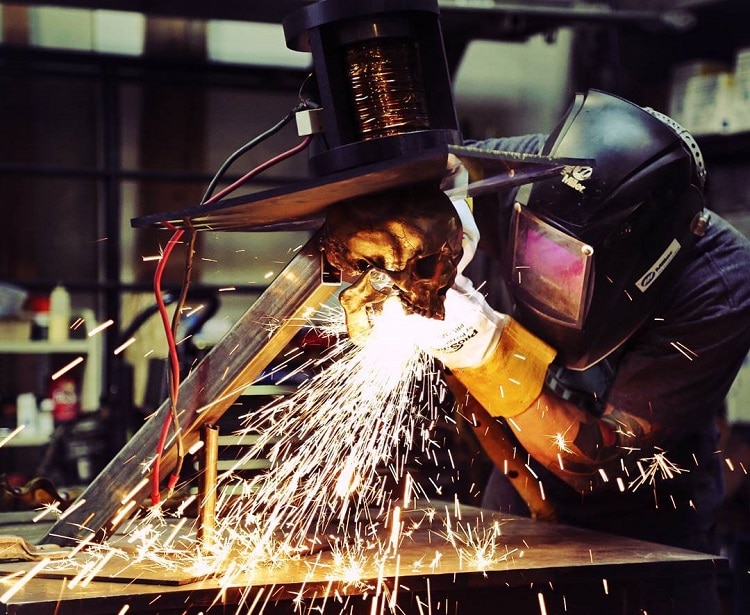
‘Killing Time’ in progress
What is the process like for conceiving of and creating your technology-mediated work?
Most of my concepts lead me off the beaten path. I will have an idea for a work of art that requires me to figure out how to achieve it. No matter how odd or unfeasible it may seem, a lot of it comes from a mindset and knowing how and where to tap in and research to develop my own ideas. In the past this has included learning how to make my own electromagnets, computer chips and even completing full sculptures as proof of concepts.
Building the physical work is very natural for me, I’ve blacksmithed, poured my own metal, designed and built or CNC fabricated parts I needed that otherwise don’t exist. More so though, I put in the hours to know as many mutations as possible with other, more foreign substances in order to find the most artistic one and execute it. Knowledge drives my art, it keeps the process fresh and allows me to really explore what I find to be aesthetically pleasing beyond that which others may perceive as possible.
What is the most challenging piece you’ve created to date? Why?
I would say Ferreflection Pool, or rather Ferreflection Wall, as I first made the piece vertically. The work is more of a proof of concept as opposed to a finite sculpture, but it challenged me to work towards something I could hone into a solid piece or installation. There was a lot of technology I had to implement and I was less familiar with those topics than in a lot of my other work.
At the time I was in grad school and I kept bringing my new programming skills into a toolbox of physical making where I could cross-contaminate my own experiments. The wall was my first go at hand making electromagnets, 320 of them from scratch. Learning how to use vision control, writing a program from that information and spitting it out to custom made driver boards was all unfamiliar territory.
Being self-funded has meant a lot of first hand exploration and learning that I have translated into future work. Every piece has its challenges and only few from the ones before can be translated into the next. Last year I completed Killing Time over a course of about eight months. To name a few, I had to be conscious of my choice in materials, scale along with the sculpture’s run time, terminal heat, cooling, glass and the flash point of ferrofluid. These topics alone are rare for most artists but I enjoy the technical feats and mastering new methods.
What do you hope the audience feels when they see your work?
I want viewers to have a connection with themselves and others around them, mediated through the sculpture. To me it seems like a way for a broader genre of people to participate and I want to provoke that phenomenon. Many can’t pinpoint exactly how things work, others who have an inkling of what ferrofluid is seems to get it – but the moments where people are mentally taken with it enough to fully consider its action and response to themselves are truly incredible for me.
I have found in the past few years that people at any age, from any industry, can become enthralled by my interactive pieces. It’s just as good of feeling when you watch a six year old dance in front of your work to see her reflection ripple across it as it is when high paid engineers marvel at it. That scope of feedback is something I find special about what I do.
Mesplé: Website | Facebook | Instagram
My Modern Met granted permission to use photos and video by Mesplé.
Related Articles:
Kinetic Steampunk-Inspired Sculptures Move Gracefully Using Salvaged Metal Parts
